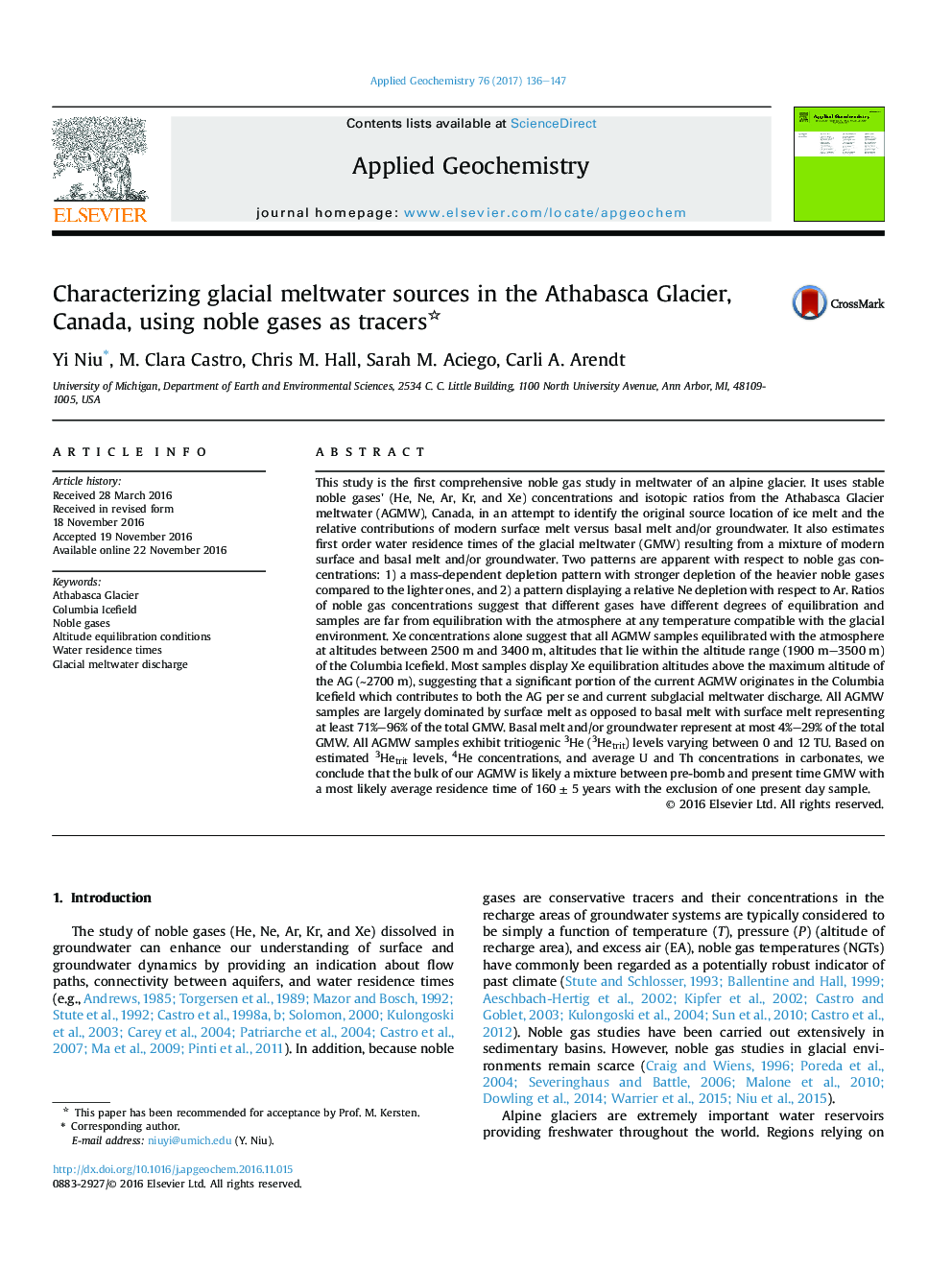| کد مقاله | کد نشریه | سال انتشار | مقاله انگلیسی | نسخه تمام متن |
|---|---|---|---|---|
| 5752624 | 1620215 | 2017 | 12 صفحه PDF | دانلود رایگان |

- Athabasca Glacier meltwater (AGMW) is in disequilibrium with surface conditions.
- AGMW originates at altitudes between 2.5 and 3.4Â km.
- A significant portion of AGMW originates from the Columbia Icefield.
- Average AGMW residence times are expected to be around 160 years.
This study is the first comprehensive noble gas study in meltwater of an alpine glacier. It uses stable noble gases' (He, Ne, Ar, Kr, and Xe) concentrations and isotopic ratios from the Athabasca Glacier meltwater (AGMW), Canada, in an attempt to identify the original source location of ice melt and the relative contributions of modern surface melt versus basal melt and/or groundwater. It also estimates first order water residence times of the glacial meltwater (GMW) resulting from a mixture of modern surface and basal melt and/or groundwater. Two patterns are apparent with respect to noble gas concentrations: 1) a mass-dependent depletion pattern with stronger depletion of the heavier noble gases compared to the lighter ones, and 2) a pattern displaying a relative Ne depletion with respect to Ar. Ratios of noble gas concentrations suggest that different gases have different degrees of equilibration and samples are far from equilibration with the atmosphere at any temperature compatible with the glacial environment. Xe concentrations alone suggest that all AGMW samples equilibrated with the atmosphere at altitudes between 2500 m and 3400 m, altitudes that lie within the altitude range (1900 m-3500 m) of the Columbia Icefield. Most samples display Xe equilibration altitudes above the maximum altitude of the AG (â¼2700 m), suggesting that a significant portion of the current AGMW originates in the Columbia Icefield which contributes to both the AG per se and current subglacial meltwater discharge. All AGMW samples are largely dominated by surface melt as opposed to basal melt with surface melt representing at least 71%-96% of the total GMW. Basal melt and/or groundwater represent at most 4%-29% of the total GMW. All AGMW samples exhibit tritiogenic 3He (3Hetrit) levels varying between 0 and 12 TU. Based on estimated 3Hetrit levels, 4He concentrations, and average U and Th concentrations in carbonates, we conclude that the bulk of our AGMW is likely a mixture between pre-bomb and present time GMW with a most likely average residence time of 160 ± 5 years with the exclusion of one present day sample.
Journal: Applied Geochemistry - Volume 76, January 2017, Pages 136-147